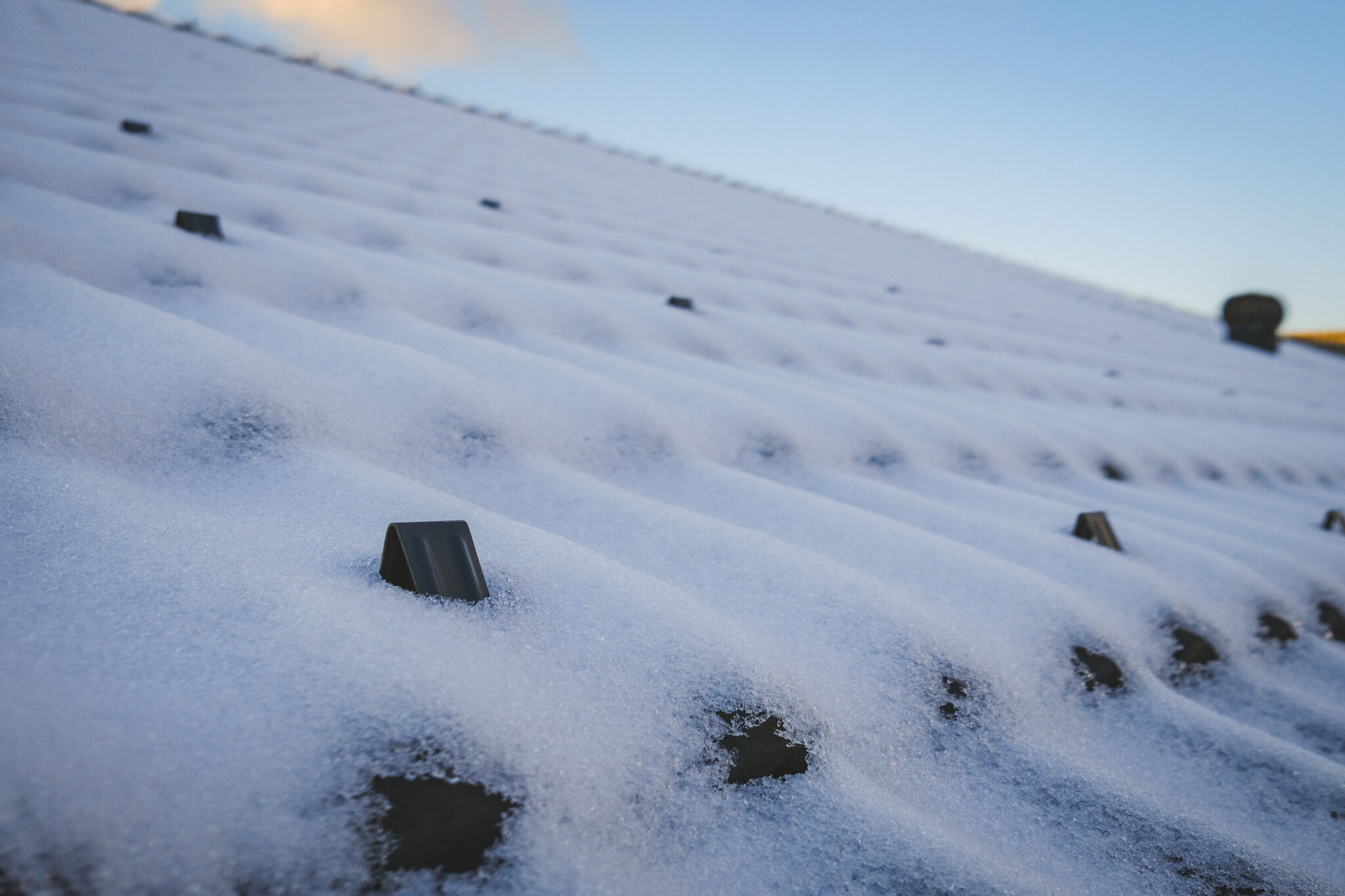Snow, cold and frost, dampness or the burden of ice cover. These are the most common sources of problems on house roofs during the winter season. Even if you live at a lower elevation and the last few mild winters have lulled you into believing that your roof can handle the winter without problems, you should not underestimate its thorough inspection before the first snowfall. It is the latter that can save you money and a lot of trouble in the future.
“The less prepared your roof is for winter and the subsequent thaw, the higher they can get. This proportion usually holds true,” believes professional roofer Jiří Liška. Many people, he says, are not aware, for example, that the Czech Republic has been plagued by more frequent wind gusts in recent years. “Every day we see that our roofs are generally poorly secured against the wind. For example, tiles are often just laid without fixing. When all you need to do is add clips to secure the tile by the batten or simply screw the tile on,” adds Liška.
So how do you secure your roof for the winter to keep it safe and functional? Experts advise that the key is to check for encroaching clutter in the gutters and on the roof itself.
“If we find that the tiles are damaged, it is better to replace them completely, which is not an expensive investment at all,” says Stanislav Maryška, adding that the gutters, gutters where snow settles, skylights or dormers should be checked with the same care. “Gutters full of leaves, moss or branches do not fulfil their function, and water flows out of them in a stream and causes further problems,” he adds.
Snow barriers are a separate chapter. Falling and sliding snow can damage gutters, the surrounding area, parked cars, and especially endanger pedestrians. Michal Ponec from Betonpres, a company that manufactures roof tiles and roof accessories including snow slide barriers, recommends snow barriers, snow breakers and snow blowers.
“At a minimum, they are appropriate over entrances, public roads or directly over vent outlets where the vent fitting can be damaged,” Ponec says.
Snow barriers can be installed on your own, but Ponec recommends leaving the job to professionals who are used to working at heights. It is important to make sure that the bags under the snow barrier brackets are always anchored to the battens during installation.
“I highly recommend, for example, a grid snow blower, which is highly effective against snow slides. For maximum durability, the steel bracket is hot-dip galvanised and then treated with a layer of powder paint applied at high temperatures. Ideally, this snowball is then used in combination with anti-snow hooks,” lists Ponec. “The lattice snowblower can also be replaced with a log snowblower, which is used a lot in mountain areas, for example, and is more aesthetically pleasing. The advantage of our Betonpres system is that the struts of the snowbags are mounted on unique brackets that distribute the load along the entire length of the bag,” he concludes.
The main thing is always to ensure that there is no leakage into the roof, so that water does not enter the timber support structures, which will degrade.
“Neglecting this can have fatal consequences, as the roof may not be able to withstand the onslaught of heavy wet snow and collapse,” warns Michal Ponec.

